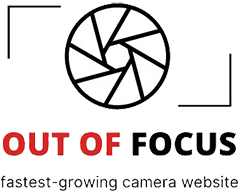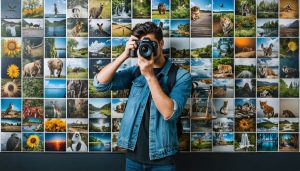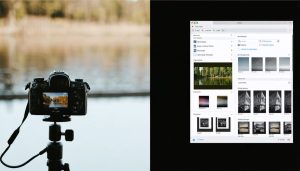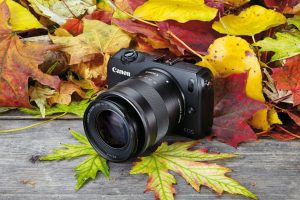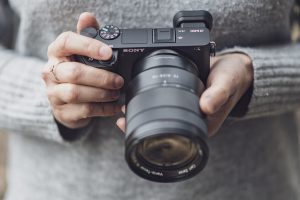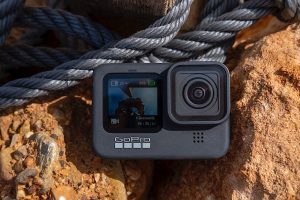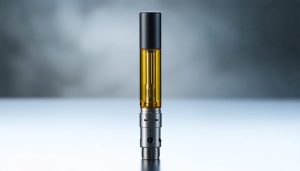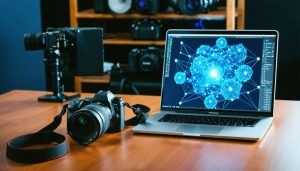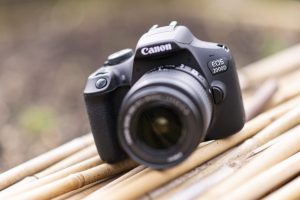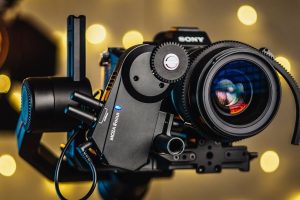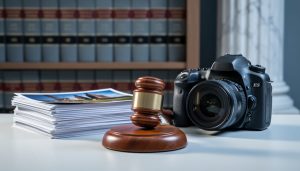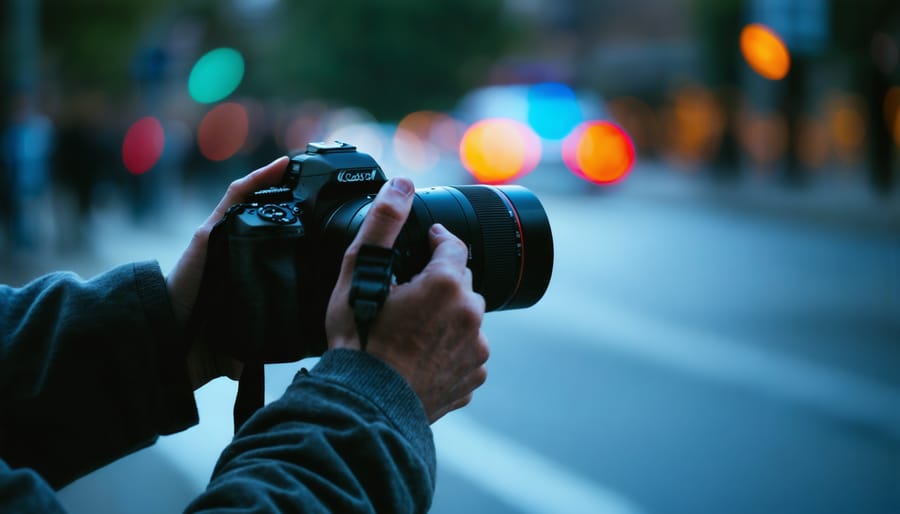
# The Split-Second Decisions That Define Truth: Understanding Photojournalism Ethics
A single photograph can topple governments, shift public opinion on wars, or immortalize human suffering—which is precisely why the ethics behind capturing these images matter more than ever. In 1994, Kevin Carter won a Pulitzer Prize for his photograph of a starving Sudanese child being stalked by a vulture, but the image also sparked a firestorm of criticism: Why didn’t he help? Should he have taken the photo at all? Carter’s tragic suicide months later underscored the profound weight photojournalists carry when documenting humanity’s darkest moments.
Today’s image-makers face these same ethical dilemmas, amplified by smartphones that make everyone a potential photojournalist and social media platforms that distribute images globally within seconds. Whether you’re a seasoned news photographer or an enthusiast documenting your community, understanding photojournalism ethics isn’t just about following rules—it’s about recognizing your responsibility when you point a camera at real people in real situations.
The ethical foundations of photojournalism rest on a delicate balance: capturing truth without exploiting suffering, maintaining journalistic integrity without staging scenes, and respecting human dignity while serving the public’s right to know. These principles may sound straightforward, but in practice, they become complex when you’re standing in a disaster zone, photographing grieving families, or deciding whether digitally removing a distracting element crosses into manipulation.
This guide examines the core ethical principles that separate responsible photojournalism from exploitation, explores the gray areas where even experienced photographers struggle, and provides practical frameworks for making sound ethical decisions—whether you’re shooting for major publications or sharing documentary images online.
The Foundation: Why Photojournalism Ethics Matter More Than Ever
In 2006, a Reuters photographer altered images from the Lebanon conflict, adding smoke to make destruction appear worse than it was. The manipulation was discovered, the photographer fired, and the incident sent shockwaves through the journalism community. Today, with smartphones in every pocket and Instagram turning us all into potential publishers, the stakes have never been higher.
Think about it: every photograph you take and share has the power to influence how someone sees the world. That wedding you documented? Those street scenes from your travels? The community event you covered for your local paper? Each image carries weight, and with that weight comes responsibility.
The core principles of photojournalism ethics aren’t just abstract rules for seasoned professionals anymore—they’re essential knowledge for anyone wielding a camera in public spaces. These principles revolve around truth-telling: capturing reality without manipulation, respecting subjects’ dignity, maintaining independence from outside influences, and minimizing harm while reporting stories that matter.
Why does this matter in 2024? Because a single manipulated image can spread across social media platforms in minutes, shaping narratives before fact-checkers can respond. When the public discovers deception—whether it’s excessive editing, staged scenes, or misleading captions—the damage extends beyond the individual photographer. It erodes trust in visual storytelling as a whole, making audiences skeptical of legitimate documentary work.
Consider this: a poorly-captioned protest photo can misrepresent an entire movement. An over-processed disaster scene can manipulate emotions for clicks rather than inform. These aren’t hypothetical concerns—they happen daily across social platforms.
Whether you’re documenting your neighborhood, covering events for a blog, or pursuing professional photojournalism, understanding these ethical foundations protects both your credibility and the integrity of photography as a truthful medium. The camera gives us incredible power to witness and share; ethics ensure we use that power responsibly.

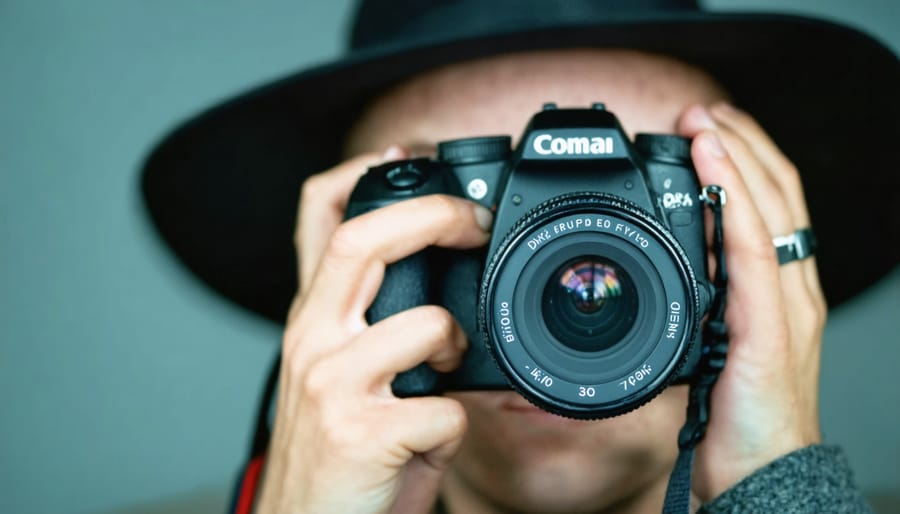
The Truth in Your Viewfinder: Accuracy and Authenticity
What You Can (and Can’t) Do in Post-Processing
The line between acceptable editing practices and manipulation can seem fuzzy, but major news organizations have established clear guidelines that help navigate these waters.
**What’s Generally Acceptable:**
You can adjust exposure, contrast, and color balance to accurately represent what you witnessed at the scene. Think of these adjustments as compensating for your camera’s technical limitations—bringing the digital file closer to what your eyes actually saw. Cropping is typically allowed, provided it doesn’t change the meaning or context of the image. Spotting out dust marks from your sensor is also fine, as these are technical artifacts, not part of the actual scene.
For example, if you photographed a protest at dusk and your camera underexposed the scene, brightening the image to show the crowd more clearly is legitimate. You’re correcting a technical issue, not altering reality.
**What Crosses the Line:**
Adding or removing elements is universally prohibited. This includes cloning out distracting objects, using content-aware fill to eliminate people, or compositing multiple frames. Even seemingly minor changes—like removing a stray piece of trash or adding saturation to make a sunset more dramatic—compromise the image’s integrity.
The Associated Press famously withdrew photographer Narciso Contreras’s accreditation after he cloned out a colleague’s video camera from a Syria war photo. Reuters established strict no-tolerance policies after a photographer enhanced smoke in Lebanon conflict images through excessive burning and dodging.
**The Guiding Principle:**
Ask yourself: “Does this edit change what happened, or does it simply help viewers see what happened more clearly?” If you’re enhancing reality rather than representing it, you’ve crossed into manipulation territory. When in doubt, err on the side of minimal intervention.
Staging and Manipulation: Where to Draw the Line
The line between capturing reality and creating it represents photojournalism’s most contentious boundary. While a landscape photographer might freely rearrange elements for compositional perfection, photojournalists must resist even subtle manipulations that misrepresent truth.
The golden rule? If your intervention changes the story, you’ve crossed the line. Moving a soda can from a scene is debatable; asking subjects to repeat actions or pose in specific ways fundamentally compromises authenticity.
History offers sobering lessons. In 2003, Los Angeles Times photographer Brian Walski was fired after combining two Iraq war photos to improve composition—a career-ending decision made in seconds. More recently, in 2015, World Press Photo disqualified Giovanni Troilo’s work after discovering he’d asked subjects to pose and misrepresented lighting conditions, claiming nighttime scenes were actually shot at dusk.
These aren’t isolated incidents. Photographer Narciso Contreras lost his Associated Press position for removing a colleague’s camera from a Syria conflict image. Even removing minor elements undermines the implicit contract between photojournalists and their audience.
Acceptable interventions are minimal: adjusting your position, waiting for decisive moments, or requesting permission to photograph. What’s off-limits includes directing subjects, staging scenes, materially altering environments, or combining multiple exposures to create misleading composites.
When tempted to intervene, ask yourself: “Am I documenting what’s happening, or creating what I wish were happening?” If it’s the latter, you’re no longer practicing photojournalism—you’re creating fiction. The distinction matters because audiences trust photojournalists to bear witness, not manufacture reality.
The Human Element: Respecting Your Subjects
Consent: When You Need It and When You Don’t
The legal right to photograph someone doesn’t always align with the ethical obligation to ask permission first. Understanding this distinction is crucial for any photojournalist navigating real-world situations.
Legally speaking, consent laws and public spaces generally permit photography without permission. If someone is visible in a public place—a protest, festival, or city street—you typically have the legal right to photograph them. However, ethics demands we consider context beyond legality.
**Public vs. Private Spaces**
While you can photograph freely in parks or on sidewalks, private property changes everything. Shopping malls, hospitals, and private businesses can restrict photography, and ethically, you should respect those boundaries even when documentation feels important. The story might be compelling, but trespassing or ignoring clear restrictions undermines your credibility.
**Photographing Children**
Children present unique ethical challenges. Even in public spaces where it’s legal, many photojournalists make it standard practice to seek parental consent when a child is the primary subject. The exception? When children are central to a newsworthy event, like a climate protest or community celebration where their presence tells the story.
**Victims and Vulnerable Populations**
This is where ethics truly diverges from law. You might legally photograph an accident victim or someone experiencing homelessness, but should you? Consider dignity, trauma, and whether the image serves the public interest or merely exploits suffering. Ask yourself: does this photograph inform viewers about an important issue, or does it simply shock?
**Cultural Considerations**
Some cultures or religious communities have strong beliefs about being photographed. In these situations, consent isn’t just courteous—it’s essential for ethical practice. Research cultural norms before covering unfamiliar communities, and when in doubt, ask respectfully and accept refusal graciously.
Dignity Over the Shot: Photographing Suffering and Tragedy
This is perhaps the most challenging territory in photojournalism—capturing images of human suffering while honoring the dignity of your subjects. It’s a tightrope walk that every photojournalist must navigate, and there’s rarely a perfect answer.
The core question is this: does your photograph exploit suffering for shock value, or does it genuinely serve the public interest by raising awareness and prompting action? The National Press Photographers Association (NPPA) Code of Ethics provides clear guidance here: “Treat all subjects with respect and dignity. Give special consideration to vulnerable subjects and compassion to victims of crime or tragedy.”
Consider Kevin Carter’s Pulitzer Prize-winning photograph from Sudan showing a starving child with a vulture nearby. It sparked global conversation about famine—but also raised painful questions about the photographer’s role. Did capturing that moment help or harm? This tension illustrates why respecting human dignity must remain paramount, even when documenting critical stories.
Professional frameworks suggest asking yourself: Would I want this photograph taken of my loved one in similar circumstances? Does this image reveal something essential to understanding the story, or am I photographing suffering simply because it’s visually compelling?
The Reuters Handbook of Journalism emphasizes restraint, advising photographers to “always respect the dignity and privacy of people who are in no condition to object or give consent.” This means sometimes lowering your camera, even when you could capture a powerful image.
In crisis situations, practice “ethical witnessing”—document the broader context and systemic issues rather than focusing solely on individual trauma. Show resilience alongside suffering. Include dignity in devastation. Your photographs should advocate for change, not simply display pain for consumption.

Context is Everything: The Caption and Presentation
A photograph can be entirely unmanipulated yet completely dishonest. This paradox sits at the heart of one of photojournalism’s most challenging ethical territories—the power of context.
Consider the now-infamous example of a wire service photo from 2006 showing a young boy holding what appeared to be a toy gun in front of burning buildings during Middle Eastern conflict. The image was authentic, but the caption initially failed to clarify that the toy gun was a plastic prop and the fires were unrelated to the boy’s presence. Published without proper context, it suggested child militarization when the reality was far more nuanced. The photograph told the truth but didn’t tell *the* truth.
This happens more often than you might think, and photographers bear significant responsibility for how their images are understood. When you crop a protest photo to show only clashing demonstrators while removing the peaceful majority, you’ve created a technically accurate but fundamentally misleading narrative. When your caption identifies “a resident surveying damage” without mentioning they’re a property owner rather than a tenant, you’ve shaped how viewers interpret economic and social dynamics.
The challenge intensifies because photographers rarely control final publication decisions. Editors crop images, rewrite captions, and pair photographs with headlines you never see until publication. This makes your original captioning absolutely critical. Every detail matters: names, locations, the sequence of events, what happened before and after you pressed the shutter.
Best practices include writing comprehensive captions immediately after shooting, while details are fresh. Document not just what you see, but what you know about what you’re photographing. If you’ve captured a moment that could be misinterpreted, note that explicitly. Some photojournalists now photograph establishing shots specifically to provide context for tighter images that might be ambiguous alone.
Remember that ethical responsibility doesn’t end when you deliver files to an editor. If you discover your work has been used misleadingly, speaking up isn’t optional—it’s part of maintaining photographic integrity. Your images will outlive any single publication, and the context you provide today shapes how they’re understood for years to come.
Conflicts of Interest: When Your Lens Isn’t Neutral
Your camera may be neutral, but your circumstances aren’t always. Conflicts of interest represent one of photojournalism’s most nuanced ethical challenges because they’re not always obvious—even to yourself.
Financial conflicts are perhaps the clearest. When a corporation pays you to document their community initiative, can you maintain the same critical eye you’d bring as an independent journalist? The answer isn’t necessarily no, but transparency becomes essential. Major publications typically require photographers to disclose any financial relationship with subjects. If you’ve been hired by a company and are sharing those images more broadly, that relationship should be clearly stated in captions or accompanying text.
Personal relationships create equally thorny situations. Photographing a protest where your close friend is organizing, covering a sports event featuring your child, or documenting a community issue affecting your neighborhood—these scenarios don’t automatically disqualify you, but they demand heightened self-awareness. Ask yourself: Am I showing the complete story, or just the parts that align with my perspective?
Consider the photojournalist who documented her own community’s recovery after a natural disaster. Her personal connection provided unprecedented access and emotional insight, but she consciously balanced intimate moments with uncomfortable truths about recovery failures. She disclosed her residency status in the photo essay’s introduction, allowing readers to contextualize her perspective.
Political affiliations warrant similar consideration. If you’re photographing a political rally for candidates you strongly oppose or support, your lens might unconsciously seek images that confirm your views. Professional photojournalists often recuse themselves from assignments where personal beliefs might compromise objectivity, or they work with editors who provide external perspective.
The solution isn’t avoiding all connections—sometimes they’re your greatest asset—but rather practicing radical honesty about them, both with your audience and yourself.
Real-World Scenarios: Ethical Dilemmas You Might Face
Understanding ethical principles is one thing—applying them in the field is quite another. Let’s explore some situations where you might find yourself weighing competing values and making difficult decisions in real time.
**The Protest Dilemma**
You’re covering a demonstration against an authoritarian regime. You’ve captured powerful images of protestors, some showing their faces clearly. These photos could tell an important story, but you know participants could face arrest, job loss, or worse if identified.
The ethical tension here involves balancing the public’s right to information against potential harm to your subjects. Consider whether showing faces is essential to the story—sometimes a photo’s impact comes from the action, not individual identities. Many photographers now blur faces or crop images to protect vulnerable subjects while preserving the narrative. Before publishing, ask yourself: does the news value outweigh the risk? When in doubt, err on the side of protecting people who trusted you with their image.
**The Staged Photo Op**
A political candidate invites media to photograph them serving meals at a homeless shelter. You arrive to find it’s clearly orchestrated—cameras positioned perfectly, and you suspect some “clients” might be campaign staff. Do you take the photos knowing they’re essentially propaganda?
This scenario tests your commitment to authenticity. While you can’t control what subjects do, you can control how you represent it. If you shoot the event, consider including contextual elements that reveal its staged nature, or writing an honest caption. Alternatively, some photojournalists choose to skip obvious photo ops entirely, focusing their limited time on genuine, unscripted moments that better serve readers.
**The Request to Delete**
You’ve documented a newsworthy accident scene when a victim’s family member demands you delete your images. They’re grieving and angry, and the confrontation is uncomfortable.
Legally, if you’re in a public space, you typically have the right to keep your photos. Ethically, it’s more complex. Consider the images’ news value honestly—are they truly necessary to inform the public, or are they gratuitous? Sometimes compassion means stepping back. Other times, difficult images serve an important purpose. Whatever you decide, explain your reasoning respectfully and recognize that families in crisis deserve empathy, even when you can’t honor their request.

Building Your Own Ethical Framework
Developing your own ethical framework isn’t about memorizing rules—it’s about building an internal compass that guides you when situations get complicated. The good news? You don’t have to start from scratch.
Organizations like the National Press Photographers Association (NPPA), Reuters, and the Associated Press have spent decades refining their professional ethics codes. These documents offer excellent starting points. The NPPA Code of Ethics, for instance, emphasizes accuracy, comprehensive representation, and respecting subjects’ dignity. Reuters strictly prohibits digital manipulation beyond basic color and tone adjustments. Study these codes—they represent collective wisdom from countless ethical challenges.
But here’s the practical part: think through ethical scenarios before you’re standing in them. Ask yourself questions now, when there’s no pressure: Would I photograph someone at their lowest moment? How much staging is acceptable when documenting a story? When does public interest outweigh someone’s privacy?
Consider creating a simple decision-making framework. When facing an ethical dilemma, run through these questions:
**Does this action serve the truth?** If you’re considering any form of manipulation or staging, be honest about whether it genuinely serves accurate storytelling or just makes a more dramatic image.
**Would I defend this decision publicly?** Imagine explaining your choice to your subject, your editor, or a journalism ethics board. If you’d feel uncomfortable, that’s your conscience speaking.
**What are the potential harms?** Consider both immediate and long-term consequences for your subjects, their communities, and public trust in photojournalism.
Document your reasoning. When you make tough calls, write down your thought process. This practice helps refine your judgment and creates accountability for future situations.
Ethics in photojournalism isn’t a creative straitjacket—it’s the foundation that gives your work credibility and impact. When you commit to ethical practices, you’re not limiting yourself; you’re actually enhancing your value as a photographer. Think about it: in an age where image manipulation is easier than ever and “fake news” accusations fly constantly, your ethical reputation becomes your greatest professional asset.
The photographers whose work we remember and trust decades later—from Dorothea Lange to James Nachtwey—didn’t achieve their legendary status despite ethical constraints, but because of them. Their commitment to truthful representation and respect for their subjects is precisely what makes their images endure as powerful historical documents.
For every photographer reading this, whether you’re on assignment for a major publication or documenting your local community for social media, ethical considerations should become second nature. When done right, ethics don’t slow you down—they guide you toward stronger, more meaningful images that resonate authentically with viewers.
Consider this your competitive advantage in a crowded field. While others might chase viral moments through manipulation or exploitation, you’ll be building something more valuable: trust. Editors, subjects, and audiences will recognize the integrity in your work, opening doors that shortcuts never could.
Before you press that shutter, ask yourself: Am I representing this moment truthfully? Have I considered how this affects my subject? Can I defend every choice I’ve made? These questions aren’t obstacles—they’re the compass that keeps photojournalism’s power as a tool for truth intact for the next generation.
